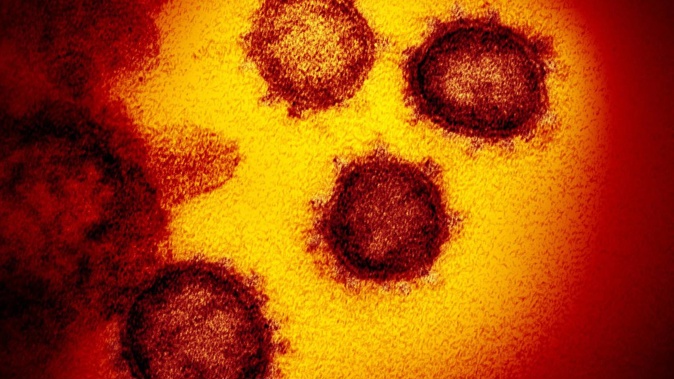
A study by UK scientists has revealed Covid-19 can survive on fabrics for up to three days, and a Kiwi microbiologist says it provides good intel to how the virus works.
However, University of Auckland associate professor Dr Siouxsie Wiles says that although the study, by De Montfort University in Leicester, posed a risk, it doesn't say if the virus is still transmissible.
Wiles says the study reinforced the theory that laundry was the likely source of transmission in the current Auckland outbreak.
The BBC reported the results of the study, which found Covid-19 can survive on three commonly worn fabrics for up to three days - polyester, poly cotton and 100 per cent cotton.
Polyester was the highest risk.
The study added droplets to the fabrics and the scientists then monitored its stability on each material for 72 hours.
Microbiologist Dr Katie Laird, who led the study, told the BBC the fabrics tested were often used in healthcare uniforms.
On 100 per cent cotton, the virus lasted 24 hours, and on poly cotton, it survived six hours.
The study also looked at washing methods of cotton.
Water was enough to remove the virus in all the washing machines when droplets of the virus were added, but detergent was needed when the fabric was tainted with the virus from artificial saliva.
The water temperature also had to be 40C or above to completely eliminate it.
Using temperature alone to rid the virus, 67C was required.
Wiles said she was pleased to see these studies taking place around the world, especially given the affinity the issue had with New Zealand and its latest community outbreak.
However, she hadn't read the whole study so it remained unclear as to whether the virus was still transmissible on the fabric or just simply detectable.
"I don't know whether it was still viable, so can they get virus on it that's still [infectious] or whether they just looked for the genetic material in which case it could be viable or it's just bits of degraded virus.
"Either way it's great that it's being done, it's good to know how long the virus survives on material. It will be useful for us to know in regards to our latest cases.
"One of things that is difficult is that many places aren't even able to say how transmission has happened."
She said the predominant way the virus seemed to travel was aerosol and through close contact.
"What we don't know is just how frequently fomite [via object] transmission like this happens.
"One of the possibilities of what happened if it was through contaminated fabric for the person in Auckland, is that it might have been by bundling up material. You could basically aerosolise some virus particles.
"It's not by touching it and then touching your face but actually getting those particles in the air.
"The study is interesting and it helps us to say that knowing a little bit more about how the virus stays on fabrics."
Wiles said the study reinforced the theory that laundry was the likely source of transmission in the latest Auckland cases and meant more measures should be put in place to prevent it happening again.
Some of those measures could include looking at how the laundry is treated, how staff are exposed, whether they need different PPE, testing regimes or were even jumped in the queue for vaccination.
A Ministry of Health spokesperson said it continually monitored Covid-19 related evidence and science, and communicated with clinical and scientific colleagues internationally to ensure it was "guided by the most up-to-date information".
"This and other studies contribute valuable insights into how this virus spreads and ways to manage and mitigate risk.
"The most common mode of transmission remains spread via droplets, when an infected person coughs, sneezes or talks.
"Cleaning is an important measure that reduces the risk of exposure to many infections, including the virus that causes Covid-19."
However, staying home if unwell, hand hygiene and physical distancing remained equally important.
Take your Radio, Podcasts and Music with you








